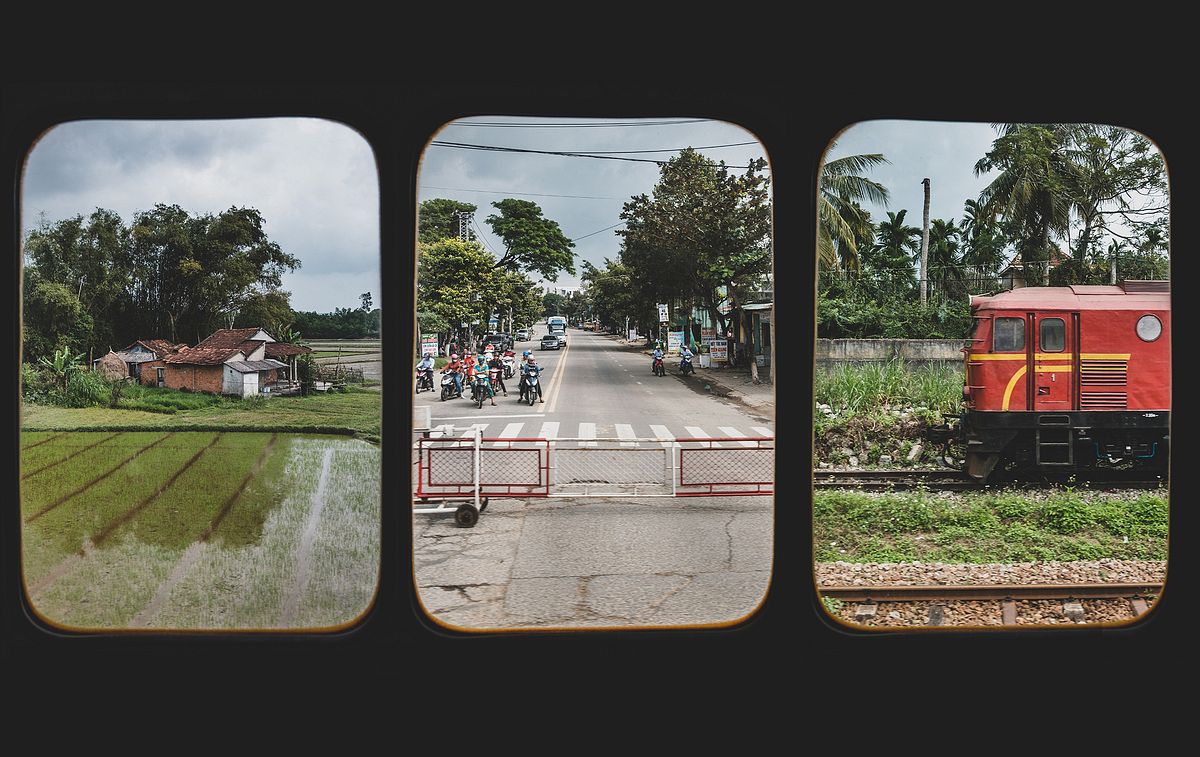Marcus Lacey’s first experience in Hanoi was sitting in a bia hơi for seven hours.
Lacey is a photographer, but when he came to Vietnam in 2016, it wasn’t for a photography expedition. He came to support his brother, who had lived here for several years, on a project. After landing at Noi Bai, Lacey took a taxi straight to his brother’s house, only to find out the brother was at work, and he was locked outside. So Lacey went to a bia hơi and waited; hours later the brother came back and they carried on drinking for the rest of the night.
The next day, Lacey jumped on a scooter that his brother had prepared and explored the city. He started with the Tay Ho area, where his brother’s house was, and discovered lots of trees, greenery and lakes; the nature that he adored so much. He also saw the temples, with all their strange but beautiful sounds and fascinating practices. And just like that, he fell in love with Hanoi.
Lacey began to take pictures all over the city. Over the years, as his photographic collection grew, so did the number of followers. As someone who was born and raised in Hanoi, I love Lacey's photos. Things that seem mundane to me are transformed into beautiful subjects through his lens. I get to discover my own city in his photos, and feel the love that we share for this land.

“You know,” Lacey tells me via Zoom, “the amazing thing about Hanoi as a big city is that it is quite remarkably similar to a lot of other great cities, and yet it's also completely different.” He was born in the United Kingdom, and spent a long time living in London. In Hanoi, he found many things he hadn’t seen before, such as the huge kumquat gardens of Tay Ho or a rooster just chilling in the street.
“But then, one thing that is quite similar to a lot of English places, particularly in the countryside, is that there's a church almost every two miles. I could remember as a child going and visiting all the different churches that we have, and that's very similar to Hanoi. It is that similarity and difference that is very fascinating to learn about, read about and photograph.”

One of Lacey’s favorite subjects to capture are the old buildings of Hanoi. The old apartment blocks, the Franco villas, the faded shop fronts, all are like windows to what it was like 100 years ago. “And you can almost just reach in and touch it. It reminds me a lot of growing up in the East of England where history is also preserved through the old buildings. And that's nice to have a reminder of your own childhood, your own culture. But it is also a reflection because it's someone else’s, it's a different culture and history.”
I had probably walked past many places that Lacey photographed but only recognized their beauty later in his pictures. And I am not the only one either; the old building photos were the first ones that really got attention on social media, from both locals and foreigners alike. “And at that time people started telling me where to go to find buildings. I'd have people literally go: 'Ok, you need to go to this number on this street. It's really brilliant.' And I'd go and I'd be like, 'Wow!'”



It was a positive feedback loop: the more Lacey photographed, the more tips he got on where to go. Steadily he built up a list of all the remarkable things to capture, from the old buildings of Hanoi, to the beautiful mountains of Ba Vi, or the mud football festival of Bac Giang. And it became something like a service he was providing for the community. “Some people said to me: 'I see this on my way to work and I just don't have time to stop and get the camera out. But you photographed it, and you take the picture that sums it up for me perfectly.'”



For Lacey, the process of taking a photo requires much more than just pressing the shutter button. He starts with researching the subject, particularly how artists have painted that thing. "Because photography has only been around a hundred-odd years, [while] we've been painting for thousands of years...They've got a longer practice that's been done so well. So it's better to look at that than to look at photographs that might have been done."
“And then to remember that all subjects, whether building or products, look incredibly different depending on the kind of light you're using. A building can look very different in the morning than it does in the afternoon. So I'd go back to buildings that I knew and loved, and go back and visit them again and again and again.”



A couple of years and hundreds of thousands of photos later, Lacey released The Hanoi Photographic Collection, a coffee table album featuring around 200 of his best images. However, his work was far from complete; he wanted to take more photos of the inside of buildings and the people he knows here as well.

But due to health issues, he had to leave Hanoi in 2020. Now he is back to full health, but the pandemic is in the way. So he is waiting until he can get back to Hanoi again.

“You know the first thing after seeing all my friends in Hanoi, I will jump on my bike and go to all the buildings. I know I will! I'd go back to see if they're still there or to see if I can get another picture, or just to get that feeling again where I'm like 'Ah! Still there, nice.'”



















